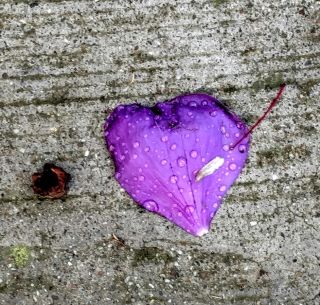Relationships
Cultivating Compassion for Others
Here's how to engage in care for others even when it’s hard.
Updated December 9, 2023 Reviewed by Davia Sills
Key points
- Our interconnection with others means that care for others feeds care for ourselves and vice versa.
- Our own distress and discomfort can interfere with our natural capacity to care for others’ suffering.
- Practice and intention can help us to overcome barriers and deepen our sense of connection.

This post was co-written by Lizabeth Roemer, Ph.D., and Josh Bartok.
In an earlier blog, I offered some suggestions for cultivating self-compassion, even when we don’t feel it. I noted Dr. Shelly Harrell’s important observation that self-compassion can seem to ignore our inherent interconnection with others, while an interdependent view of the self, such as that found in many indigenous cultures, allows us to see the ways that caring for others helps us care for ourselves and vice versa. One classical Buddhist text, called the Sedaka Sutta, says, “Taking care of oneself, one takes care of others. Taking care of others, one takes care of oneself.”
Moreover, a study by Ellen Lee and colleagues found that both self-compassion and compassion for others predict mental and physical well-being over time. Compassion allows us to genuinely connect to other people and deepens our sense of shared humanity. So here I turn attention to ways to cultivate compassion for others, even when it’s hard.
Pay attention.
The first step in caring for others is simply paying attention to others: noticing what is happening to them. By watching and listening with empathy, we can come to know what others are experiencing, including the pain and suffering that may be arising for them. We may notice a trembling in their voice, a sad look in their eyes, a catch in their breath. Or we may read accounts of things that are happening to people we don’t know but with whom we share a common humanity. Turning toward the suffering of others rather than instinctively or impulsively turning away is the first step in giving rise to compassion.
Manage our own distress.
At the same time, we can notice what is arising for us in response to what we are observing. Often, the biggest barrier to compassion for others is the distress that we experience due to people’s suffering (including the distress of powerlessness) or the ways that their suffering elicits or resonates with painful emotions in us. When we are able to slow down and observe our own responses with care and compassion, we can more easily keep them from derailing our connection and care for others. (I describe some strategies for managing emotions in more depth here.)
Sometimes, I find it helpful to bring my awareness to my body and breathe deeply, imagining that I am making myself (and specifically my heart) big enough to hold both myself and others. I find it helpful to remember that caring for others doesn’t mean ignoring myself because we are interconnected. So again, care for others includes care for ourselves. When I struggle with compassion or difficult emotions, it can be helpful for me to reconnect to my values in these moments. If I care about being in relation to the person whose pain is distressing me, then I will want to resist the natural urge to turn away from their pain and instead turn toward it so that I can attend to it.
Notice judgments that arise, and don’t throw fuel on those judgmental fires.
Of course, there will be times when critical or judgmental thoughts about others’ suffering arise in us. We may think others should be expressing their distress differently or should have done something different or that we wouldn’t find their situation as upsetting as they seem to. We can notice such thoughts as they arise, but we don’t have to follow them; we don’t have to give them our attention or energy.
If we value being in a relationship, we can instead connect to the feelings we observe and the care we have for their pain, even if we might not fully relate to every detail of their experience. (This is similar to the way we can notice our judgments of ourselves but not believe or cling to them—in this way, practicing caring for others is practice in caring for ourselves, and in caring for ourselves, we practice the skill to care for others.)
Let go of being right.
Closely related to our judgments is a natural tendency to see our own perspective as “right,” which can easily turn into making other people “wrong.” This need to be right becomes the distortion of righteous certainty and is often another way of trying to avoid the distress that may come from fully connecting to suffering. And it can serve to distance ourselves from our shared humanity and leave us feeling disconnected and alone.
We can notice when this sense of righteousness arises and entertain the possibility that other perspectives and experiences are also valid. This doesn’t mean we have to discount, disregard, or invalidate our own experience—only that we can try to hold both.
Consider acts of kindness.
It is much easier to control our actions than our thoughts and feelings. Therefore, one way to practice compassion when it feels hard is to engage in a compassionate action, to do something kind for someone else, no matter how uncompassionate we may feel. We can make this a habit: Every day, we can make an effort to engage in some kind of acts of kindness for strangers and for people in our lives. Notice what it feels like when you do something caring or kind for another person. This could be letting someone know what you appreciate about them, giving someone your seat on the bus, checking in on someone who is having a hard time, or listening to someone talk about something upsetting them.
***
And remember, failures of compassion are natural and human—and they can separate us from one another and interfere with relationships and well-being. Bringing awareness and intention to the suffering of others can help us to reconnect to our common humanity and reduce our sense of isolation. Compassion-for-others practices can be intermingled with self-compassion practices, strengthening our sense of care for ourselves and others and further opening our hearts.
Read part 2 here
Josh Bartok is a contemplative photographer and life coach. He is the author of two children's books and several collections of inspiring quotes.
References
Lee, E.E., Govind, T., Ramsey, M., Wu, T., Daly, R., Liu, J., Tu, X., Paulus, M.P., Thomas, M.L., & Jeste, D.V. (2021). Compassion toward others and self-compassion predict mental and physical well-being: a 5-year longitudinal study of 1090 community-dwelling adults across the lifespan. Translational Psychiatry, 11.




